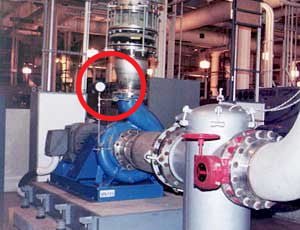 Face it! Every now and then, you adopt practices that are completely useless. We all do it. Why? Because we don’t know any better. Perhaps because one person does something out of ignorance, and the rest of us just leave it alone.
Face it! Every now and then, you adopt practices that are completely useless. We all do it. Why? Because we don’t know any better. Perhaps because one person does something out of ignorance, and the rest of us just leave it alone.
A fairly common example is a single pressure gauge installed on the discharge side of a pump. Consider for a second what this pressure gauge is able to tell you. The quick answer is nothing.
Pressure gauges are important for operating a pump efficiently. In fact, if you know how to read your pressure gauges properly, and how to interpret the data, then you can run your pump for 20 years with very little maintenance. This is in stark contrast to most pumps that are run with little consideration to their design or purpose. Most pumps are in the maintenance shop often – sometimes as often as every 6 months.
The reason is because the vast majority of pumps don’t have pressure gauges installed on them. And if they do, it’s often a single gauge on the discharge side of the pump – which happens to be entirely useless.
To understand why this solitary and misplaced gauge will do you no good, you must have a basic understanding of your pump curve. Each pump comes with a curve that specifies the operating spectrum of the pump. Your pump will move across the curve as pressure and flow rates fluctuate. When your pump performance moves too far to the left or right, then you’re unwittingly damaging your pump.
This is unfortunate because it’s 100% preventable – but that’s a discussion for another time.
On your pump curve, you’ll notice one side of the graph represents differential head, and the other side represents flow. Head is pressure converted to vertical height of a liquid. In order to get the differential head that your pump is producing, you need a pressure gauge on the suction side AND on the discharge side of your pump.
So a single gauge on the discharge side is very much useless. If you’re going to throw caution to the wind and operate a pump with a single pressure gauge – put it on the suction side. At least that way you can make sure your pump is getting enough suction head (pressure). That would eliminate some of your maintenance issues. But on the discharge side the gauge can tell you nothing.
Speaking of useless pressure gauges, you can have all your gauges in the right place, but if their accuracy is compromised then it won’t matter. A dial gauge is very prone to rapid degeneration as vibration and shock wear out the mechanical parts that move the needle. Not only is a vibrating dial gauge impossible to read, but it also destroys the gears that keep it working accurately.
On the other hand, a digital pressure gauge uses only one moving part – the diaphragm that flexes as pressure changes. Everything else is electrical. So vibration might shake the display a bit, but the digital digits won’t vary between 100 and 400 psi just because the pipe shakes. And the circuit board and electrical connections are not prone to wear due to pump vibration.
A digital pressure gauge will give you greater accuracy and durability. One like our PG7 model will also give you outputs to interface with your control system. You can control pumps, valves, and alarms by sending your digital signal to a controller and programming it to behave properly. You can also set up data logging and track the differential head of your pumps over time.
In contrast, with a dial gauge, everything is done manually, and the success of your pump monitoring program will depend entirely on how well it is executed by your employees.
At the end of the day, you need to spend some time getting familiar with pump operation and the pumps you’re operating. Get your pump curves out of the drawer and put some digital pressure gauges on both sides of your pumps. These tools working together will tell you what your pumps are doing and what they need to work as designed.
You can run a pump for 20 years with very little maintenance, but it won’t happen until you take the time to learn how to do it. And that solitary pressure gauge on the discharge side of your pump isn’t going to help.
Let us help! Contact us and we’ll chat about your pumps and how some good digital pressure gauges can help you reduce your pump operating and maintenance expenses dramatically.